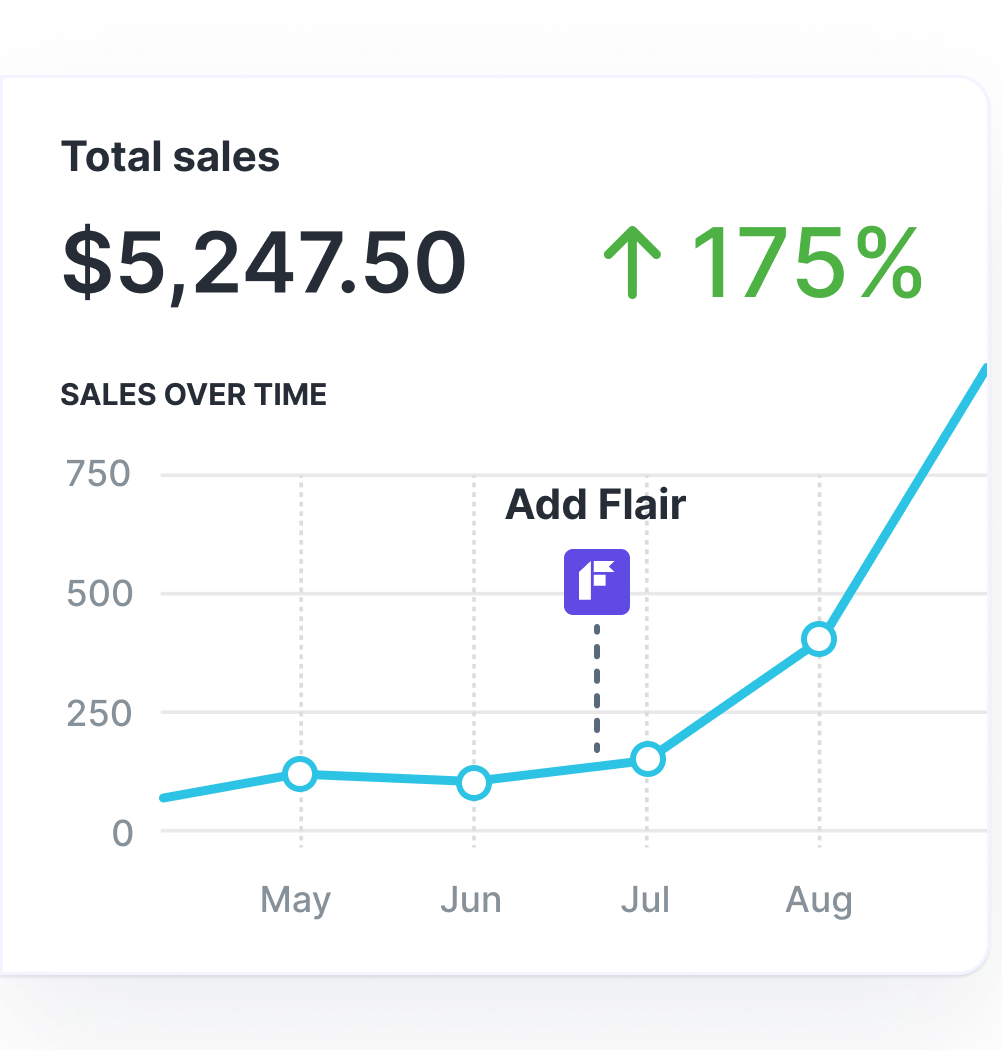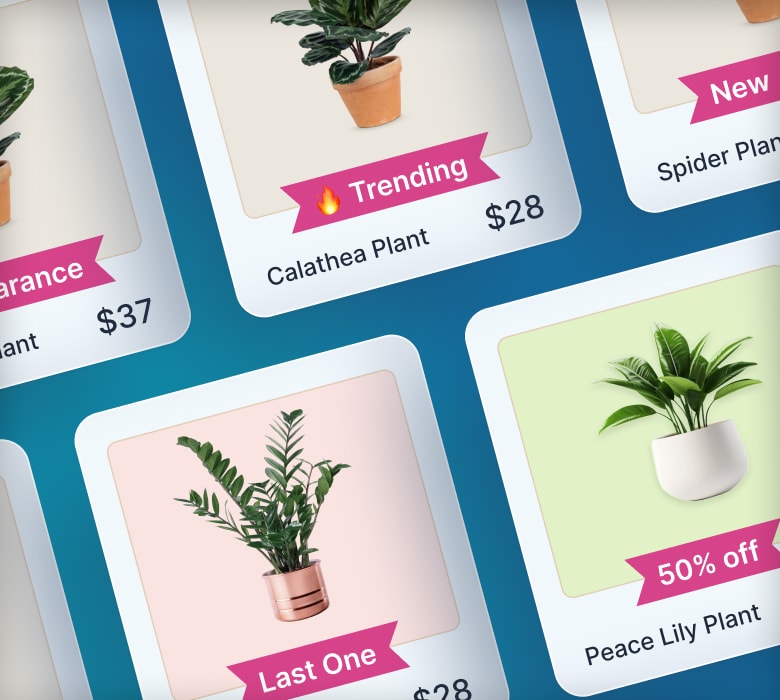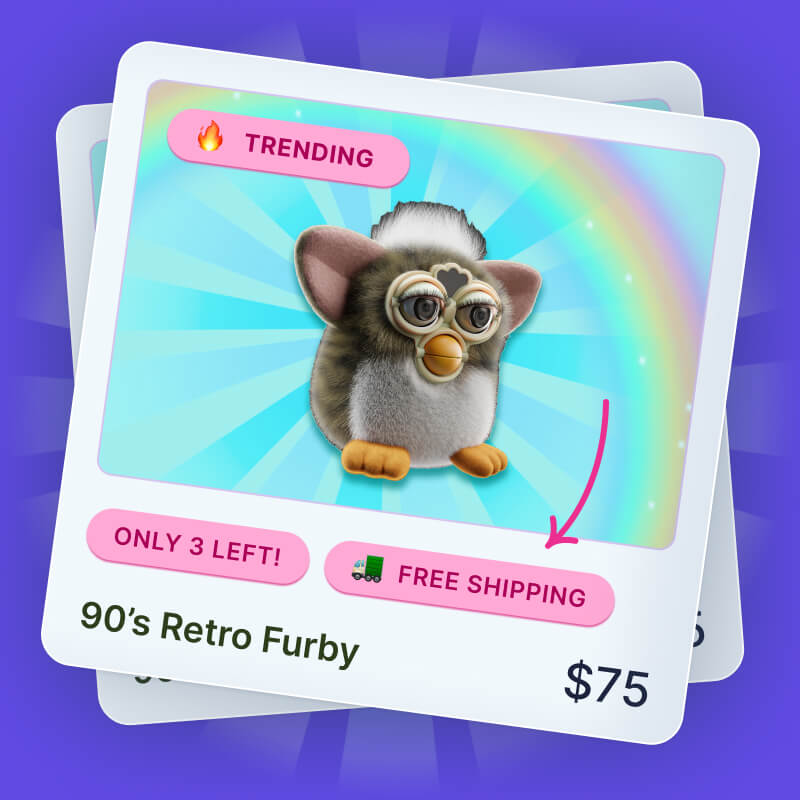The 90-Day Ecommerce Turnaround Plan: From Traffic Leaks to Profit Peaks

The 90-Day Ecommerce Marketing Strategy Sprint
Did you know that one in five new businesses fail in their first year?
Or that only half make it to the five-year mark?

They’re sobering statistics that highlight just how challenging it can be to start a business. But here's the thing: failure isn't inevitable. The businesses that crash and burn typically make the same critical mistakes – scattered marketing efforts, wasted ad spend, and lack of strategic focus.
You don't have to be part of that statistic. With a laser-focused 90-day marketing sprint, you can completely transform your ecommerce results. Your 90-day transformation starts with understanding which tactics actually move the needle and which ones are just marketing noise.
The clock is ticking, and your competition isn't waiting…
Step 1: Building Your Marketing Plan Foundation in 48 Hours
Strategic planning comes before execution, and without this foundation, you'll waste precious budget on scattered campaigns that don't connect with your audience. A solid marketing blueprint ensures every dollar spent moves you closer to your revenue goals, while also creating consistency across all customer touchpoints.
Creating buyer personas is the first critical step of your ecommerce marketing strategy. Start by analyzing your existing customer data from your CRM and website analytics to identify patterns in demographics, behavior, and purchase history.
Next, conduct competitor analysis to understand how similar businesses position themselves. Survey your current customers about their pain points and motivations. Finally, synthesize this data into 2-3 detailed personas that represent your ideal customers.
Your marketing plan requires these essential ecommerce marketing strategy components:
- Clear target audience definition with specific demographics and psychographics
- Customer journey mapping from awareness to post-purchase advocacy
- Channel prioritization based on where your audience spends time
- Measurable goals with specific KPIs and timelines
Step 2: Marketing Channels That Deliver Results
The 80/20 rule applies perfectly to marketing channels – 80% of your results come from 20% of your efforts.

Instead of spreading resources thin across every available platform, you should focus on high-impact channels that deliver measurable returns for your ecommerce business. It's all about finding the right mix that resonates with your audience and meets your goals.
When discussing specific marketing channels, I've divided them into two categories:
- Before-the-click marketing channels: Focus on attracting traffic by increasing visibility and generating interest through strategies like SEO, content marketing, and social media advertising.
- Post-click marketing channels: Aim to convert traffic into sales by optimizing the purchasing process with tactics such as landing page optimization, email marketing, and retargeting.
Driving Traffic With Before-the-Click Marketing Channels
Before-the-click marketing channels are all about attracting traffic to your brand. These channels focus on capturing the attention of potential customers and driving them to your website or landing page. Strategies like SEO, content marketing, and social media marketing are designed to increase visibility and generate interest, ensuring that your target audience is aware of your offerings and motivated to learn more.
| Marketing Channel | Investment Level | Time to Results | Best For |
| Email Marketing | Low to Medium | 1-4 weeks | Customer Engagement |
| Facebook Ads | Medium to High | 1-2 weeks | Targeted Advertising |
| Google Ads | Medium to High | 1-2 weeks | Search Visibility |
| Medium | 4-8 weeks | Brand Awareness | |
| SEO | Low to Medium | 3-6 months | Organic Traffic |
| Content Marketing | Low to Medium | 2-6 months | Audience Engagement |
| Influencer Marketing | Medium to High | 2-8 weeks | Brand Reach |
| Affiliate Marketing | Low to Medium | 4-12 weeks | Performance-Based Sales |
Email Marketing
Email marketing is a classic yet powerful tool. It's all about crafting personalized messages that engage your audience. By analyzing open rates, click-through rates, and conversions, you can gauge its effectiveness and tweak your strategy accordingly.
Social Media Marketing and Advertising
Social media marketing involves using social media platforms like Facebook and Instagram to promote products or services, engage with audiences, and build brand awareness. By leveraging targeted advertising and organic content, businesses can connect with potential customers, foster community, and drive traffic to their websites.
Facebook Ads
Facebook Ads offer a robust platform for reaching a targeted audience. With detailed analytics, you can track engagement, conversions, and ROI to determine how well your ads are performing and make necessary adjustments.
Instagram is a visual social media marketing powerhouse. To measure its impact, look at engagement rates, follower growth, and conversions. It's all about creating visually appealing content that resonates with your audience.
Google Ads
Google Ads can be a game-changer for visibility. By focusing on metrics like click-through rates, conversion rates, and cost-per-click, you can assess the success of your campaigns and optimize them for better results.
SEO
Search Engine Optimization (SEO) is crucial for organic visibility. By tracking keyword rankings, organic traffic, and conversion rates, you can evaluate how well your SEO efforts are paying off and adjust your strategy as needed.
Content Marketing
Content marketing focuses on creating valuable content to attract and engage your audience. Analyze metrics like page views, time on page, and social shares to understand its effectiveness and refine your content strategy.
Influencer Marketing
Influencer marketing leverages the reach of popular figures. To measure success, consider engagement rates, reach, and conversions driven by influencer partnerships. It's about finding the right influencers who align with your brand.
Smaller influencers represent your secret weapon for acquisition that actually converts. In fact, Instagrammers with up to 1,000 followers see average engagement rates of 10.58%, dropping to 1.54% for mega influencers with over a million followers.

Why? Because their audiences trust their recommendations, making them cost-effective alternatives to expensive celebrity partnerships.
Affiliate Marketing
Affiliate marketing is a performance-based marketing strategy where businesses reward affiliates for driving traffic or sales through their marketing efforts. Affiliates promote products or services using unique tracking links, earning a commission for each sale or lead generated. This approach allows companies to expand their reach and tap into new audiences with minimal upfront investment, as affiliates are only paid for actual results.
By closely monitoring these channels and their respective metrics, you can identify which ones are delivering the best results and adjust your marketing strategy to maximize success. Happy marketing!
4 Immediate Actions to Optimize Your Channel Selection:
- Audit current channels using ROI metrics and identify your top 20% performers
- Implement email marketing automation for abandoned cart recovery and customer retention
- Allocate 70% of budget to your highest-performing channels
- Test one new channel quarterly while maintaining focus on proven performers
Focus your energy on channels that consistently deliver results rather than chasing every new marketing opportunity that emerges.
Turning Traffic Into Sales With Post-Click Marketing
Post-click marketing channels are centered around converting traffic into sales. Once a potential customer clicks through to your site, the goal is to offer a smooth user experience that guides them through the purchasing process effectively. This involves optimizing landing pages, utilizing email marketing for follow-ups, and employing retargeting strategies to nurture leads. The focus here is on turning interest into action, ensuring that visitors become loyal customers.
Conversion-Driving Apps
Choosing the right tech solutions can make a huge difference here. If you’re on Shopify, tools like Flair help fill the post-click gap that's often overlooked when creating an ecommerce marketing strategy. The Flair app helps increase conversions and sales on Shopify through automated, goal-driven on-site promotions.
Flair provides on-site tools that attract attention, engage visitors, and drive conversions; from product badges and sale banners to dynamic offers like “Spend $50 for free shipping". Whether you're running paid campaigns or organic traffic, Flair ensures that once shoppers land on your site, they’re met with high-impact messaging that turns traffic into revenue.

Grow Your Shopify Sales by over 175% with Flair
-
Increase sales using product badges and sales banners
-
Maximize conversions with scarcity, urgency and countdown timers
-
Automate promotions with targeted rules and scheduling
Audience Retargeting
Retargeting is a digital marketing strategy that focuses on re-engaging users who have previously interacted with a brand's website or digital content but did not complete a desired action, such as making a purchase. By using cookies or tracking pixels, businesses can display targeted ads to these users as they browse other websites or social media platforms, reminding them of the products or services they viewed. This approach helps increase conversion rates by keeping the brand top-of-mind and encouraging potential customers to return and complete their transactions.
3-Step Retargeting Process:
#1: Segment Your Audience Create custom audiences based on pages visited, time spent, and actions taken on your site.
#2: Craft Targeted Messaging Develop specific ad creative addressing why visitors didn't convert initially – price concerns, product questions, or comparison shopping.
#3: Optimize Frequency and Timing Set appropriate frequency caps and schedule ads during peak engagement hours to avoid ad fatigue while maintaining visibility.
Remember, customer acquisition costs vary significantly by channel – from an average of $212 for social media marketing to $535+ for appearances at industry trade shows.

Focus your marketing plan on channels delivering qualified traffic that converts into paying customers.
Quick-Win Conversion Tactics:
- Deploy conversion-driving tools like Flair to enhance post-click experiences across all channels
- Leverage product recommendation engines based on browsing history
- Display exit-intent popups offering discounts or gifts
- Offer social shopping features enabling direct purchases
Step 3: Turning One-Time Buyers into Lifetime Customers
Your customer loyalty strategy determines whether buyers become loyal advocates or forgotten transactions. Email marketing remains your most cost-effective retention tool when personalized and automated, delivering the highest return on investment of any channel.

Implementing reward programs dramatically increases repeat purchase likelihood. Indeed, customers who join a loyalty program and redeem a reward are 68% more likely to buy again. These programs create emotional connections that transform occasional buyers into brand champions who drive sustainable revenue growth.
Focus on Customer Lifetime Value Over Acquisition Costs
Shifting your mindset from acquisition costs to customer lifetime value (CLV) revolutionizes your marketing budget allocation. Acquiring new customers costs 5-25x more than retaining existing ones, while increasing retention rates by just 5% can boost profits by 25-95%.

4-Week Retention Campaign Template:
- Week 1: Welcome email with brand story + 10% discount
- Week 2: Educational content showcasing product benefits
- Week 3: Social proof email featuring customer testimonials
- Week 4: Exclusive loyalty program invitation with early access perks
This systematic approach nurtures relationships while gathering behavioral data for future personalization.
Step 4: Tracking KPIs That Drive Growth Decisions
You're likely tracking vanity metrics instead of actionable data that drives real business decisions. Most ecommerce businesses focus on website traffic and social media followers while ignoring the metrics that directly impact revenue and profitability.
Here are the essential key performance indicators (KPIs) you should monitor:
| KPI | Industry Average | Good | Great |
| Conversion Rate | 1% – 3% | 3% – 5% | 5%+ |
| Average Order Value | $50 – $100 | $100 – %150 | $150+ |
| Customer Acquisition Cost | $87 – $129 | $50 – $80 | <$50 |
| Email Open Rate | 18% – 22% | 25% – 30% | 30%+ |
| Return on Ad Spend | 3:1 | 4:1 | 6:1+ |
Setting Up Proper Tracking:
For Google Analytics 4, install the tracking code on every page and configure enhanced ecommerce events. Set up conversion goals for purchases, email signups, and cart additions.
For Facebook Pixel, place the base code in your website header and add event tracking for purchases, add-to-cart, and view-content actions. This enables accurate attribution and retargeting campaigns.
Focus on these metrics weekly to make data-driven decisions that actually move your business forward.
Step 5: Understanding Emerging Ecommerce Trends
Ecommerce continues to evolve rapidly, reshaping how customers discover, evaluate, and purchase products. Staying on top of emerging trends can help your brand stay relevant and competitive in a fast-changing market.
- Social commerce takes the lead – TikTok now boasts a 45.5% buyer rate, making it the most effective platform for direct-to-consumer sales. Instagram follows closely, with both channels transforming traditional browsing into frictionless, in-app purchasing experiences. Together, they’re redefining how brands convert engagement into revenue.

-
AI-powered personalization – Artificial intelligence is enabling highly tailored shopping experiences. By analyzing customer data and behavior, AI tools can generate dynamic product recommendations, personalized offers, and even individualized landing pages. This level of customization helps improve conversion rates and boosts customer loyalty. \
-
Interactive video content – Shoppable videos and live shopping streams are blending entertainment with commerce. These formats allow customers to see products in action, ask real-time questions, and purchase instantly without leaving the platform. It’s an engaging, trust-building way to turn viewers into buyers. \
-
Sustainability messaging – Eco-conscious shopping continues to influence purchasing decisions. Highlighting sustainable materials, ethical sourcing, and transparent supply chains can help your brand connect with environmentally aware consumers. Beyond attracting attention, clear sustainability messaging also strengthens brand trust and long-term loyalty. \
Gradual Implementation Strategy
Avoid the temptation to adopt every new trend at once. Begin with one platform where your audience is most active, then roll out new features gradually. Test social commerce tools, measure performance, and scale what proves effective. This steady approach allows your team to refine strategies, learn from real results, and build internal expertise without disrupting operations.
Your 30-Day Success Blueprint
Your ecommerce success hinges on one critical factor: ensuring every visitor encounters high-impact messaging that converts traffic into revenue. Whether you're driving paid campaigns or organic traffic, the foundation remains the same – powerful, conversion-focused messaging that speaks directly to your customers' needs.
Don't overwhelm yourself trying to implement everything simultaneously. Choose 2-3 strategies from this guide that align with your current capabilities and resources. Build your foundation first, then scale what works.
Your 30-Day Action Plan:
- Week 1: Audit your current messaging and identify gaps
- Week 2-3: Implement your chosen strategies
- Week 4: Analyze results and optimize
The businesses that win are those that act quickly and iterate consistently. Your competitors are already optimizing their messaging while you're reading this. Pick your strategies, start implementing today, and watch your conversion rates climb. Your revenue growth begins with your next visitor – make sure you're ready for them.




